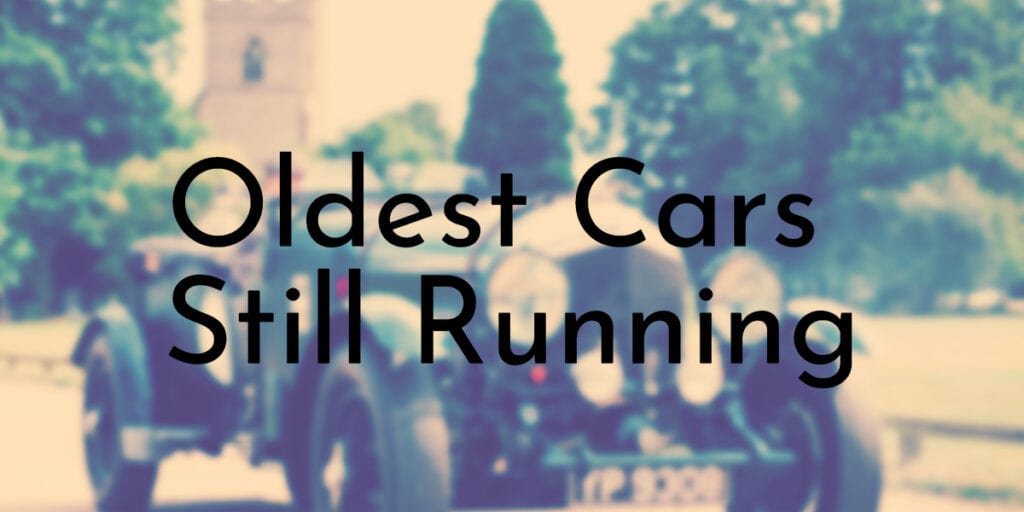When you think about how cars have changed over the years, it’s hard not to get a little nostalgic. You can’t go as far back as the beginning of motorized vehicles, but you can probably say that cars helped people get around better than ever before during the Industrial Revolution.
Before cars, people had to walk or travel on horseback—and even then, they were still pretty limited in terms of distance and speed. Cars made travel easier because they provided a reliable means of transportation for people who could afford them.
It also enabled longer-distance travel at faster speeds than ever before, which made it possible for people to visit places they couldn’t otherwise reach or afford.
In the world of automobiles, there are many vehicles that have been around for decades, and perhaps even centuries. Some of these cars are still running today, while others have been retired to museums or other historical sites.
Let us drive a trip down memory lane as we read on eight of the oldest cars still running today.
8. Ford Model T
Year Introduced: October 1, 1908
Production: 1908 to 1927
Manufacturer/Inventor: Ford Motor Company
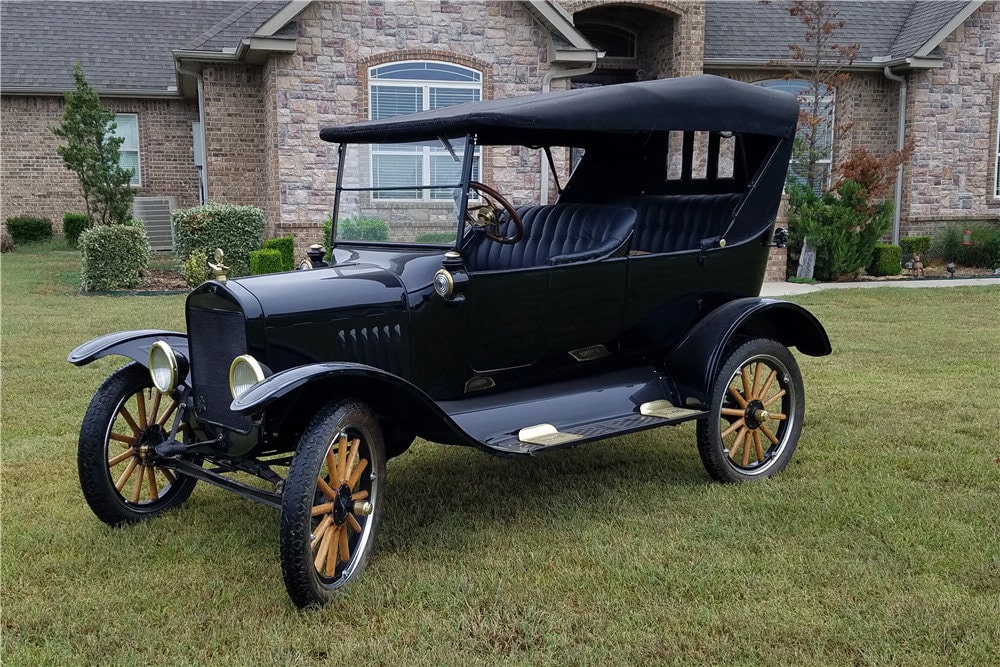
Ford Motor Company manufactured the Model T car from 1908 until 1927.
Henry Ford created the Model T with the intention of providing economical, practical transportation for the average person, but it soon gained popularity for its affordability, toughness, adaptability, and simplicity of maintenance.
Under the front seat was where the 10-gallon gasoline tank was situated. Because the Model T’s engine could only get fuel by gravity and because the reverse gear had greater power than the forward gears, it frequently had to be pushed up a steep incline in reverse.
Did You Know?
The 15 millionth Model T left the factory on May 26, 1927, driven by Henry Ford and his son Edsel.
7. Rolls-Royce 1904 Model
Year Introduced: 1904
Production: 1904 to 1906
Manufacturer/Inventor: Henry Royce
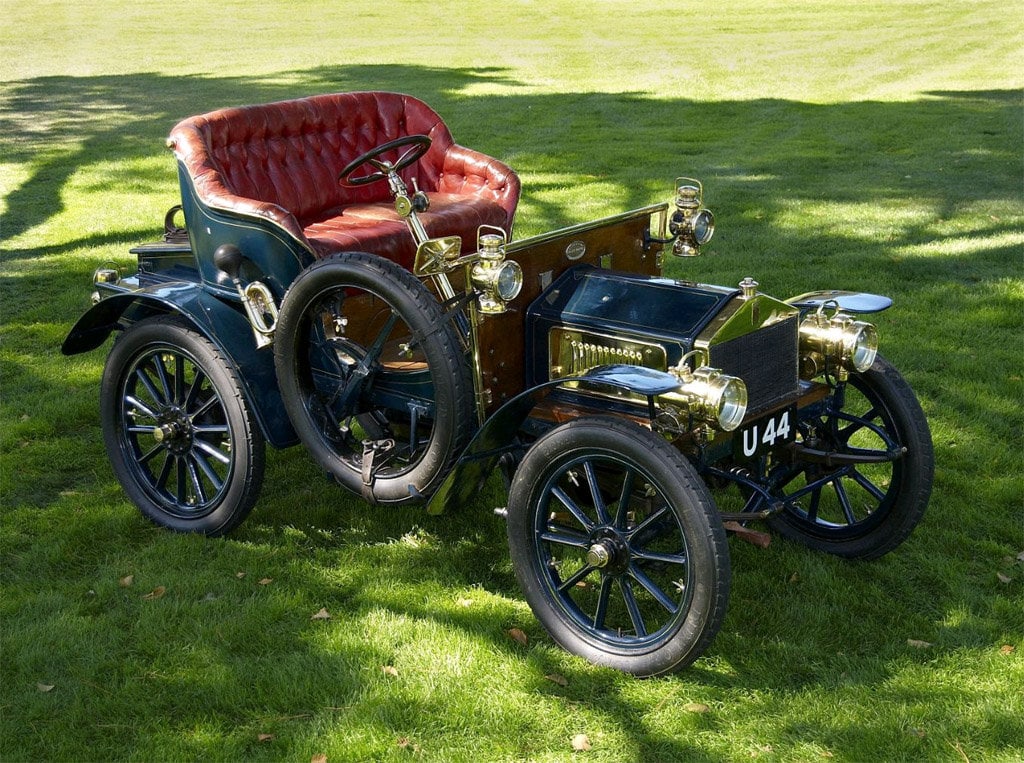
The car was designed with inspiration from Royce’s used Decauville, which he had the right idea that he might improve.
There were supposed to be 19 pieces of 10-horsepower automobiles built, but only 17 were actually built. These vehicles, known as Type As, had two-cylinder engines with three-bearing crankshafts, dual camshafts, and side exhaust and overhead inlet valves.
A cone clutch connected the 1.8-liter engine to a three-speed sliding gearbox with the shaft final drive.
Did You Know?
This 1904 model, which is the oldest operating Rolls-Royce in the world, was up for auction at the Bonhams: Olympia Auction in 2007.
6. Stevens-Duryea Model L
Year Introduced: 1901
Production: 1901-1906
Manufacturer/Inventor: J. Stevens Arms & Tool Company
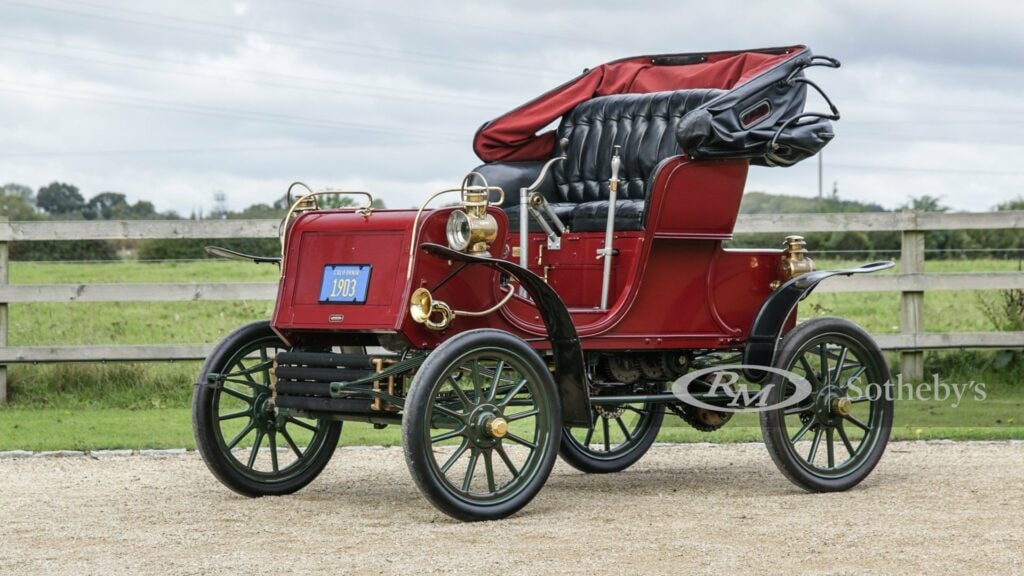
Guy A. McLain, the history museum’s director, claims that the Stevens-Duryea, which is still in operation, is only on loan from a Springfield-area collector who bought it from its previous owner in Georgia.
While the majority of the population continued to live in a world where everything was still pulled by horses, the Model L was at the vanguard of an automobile industry that was solely dedicated to creating opulent toys for wealthy enthusiasts.
The vehicle had a 7 horsepower engine, a three-speed gearbox with reverse, leather seats, and a kind of rumble seat that folded out from the front of the vehicle so that passengers rode forward of the dashboard.
Did You Know?
The maximum speed of the Model L was 15 or 20 mph.
5. Lutzmann 4HP Victoria
Year Introduced: 1896
Production: 1896
Manufacturer/Inventor: Freidrich Lutsmannis
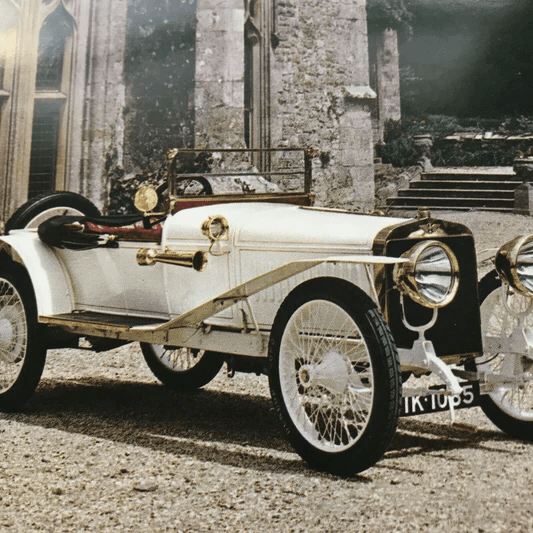
This 186 Lutzmann 4HP Victoria’s one-cylinder engine is still fully functional. This gorgeous car only has around 4 horsepower, yet it nonetheless moves over the wide road slowly.
This lovely, high-sitting car is entered in event races, such as the 2014 London to Brighton Veteran Car Run, and it can still go a short distance with ease.
The bodywork of this classic piece resembles a stagecoach without horses thanks to its two bigger spoked wheels and its smaller front wheels. It has been recently refurbished, both in its black exterior and the black leather interior.
Did You Know?
This car was shown at the 2014 Concours Elegance in Hampton Court in all its glory among 59 other rare cars of the world.
4. Benz Motorwagen
Year Introduced: 1886
Production: 1886–1893
Manufacturer/Inventor: Rheinische Gasmotorenfabrik Benz & Cie.
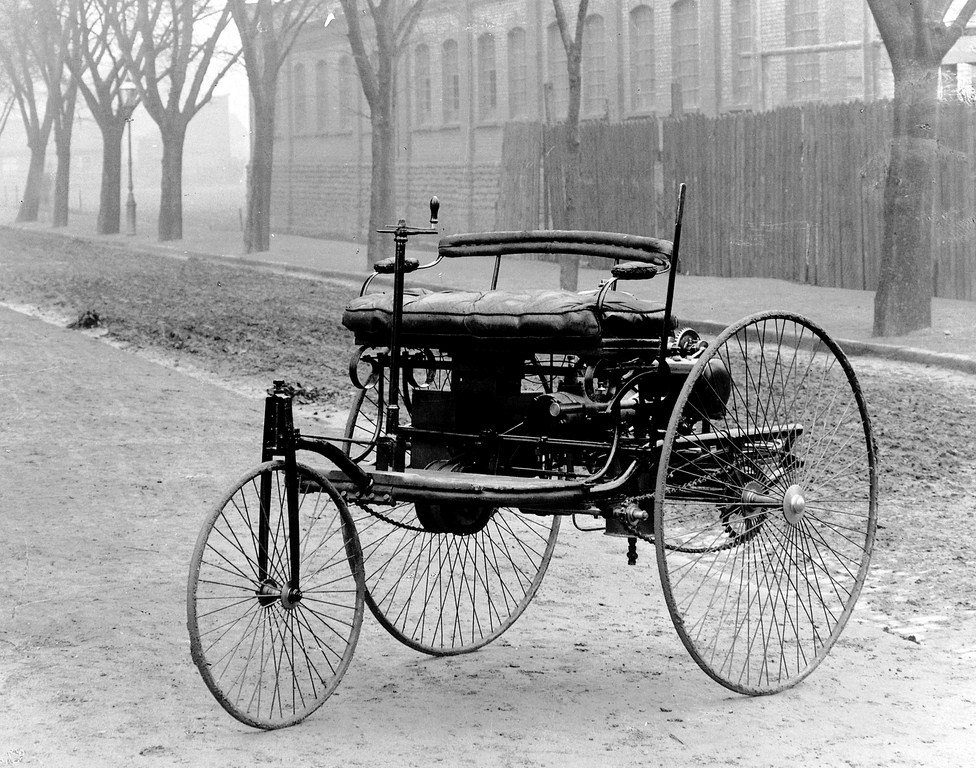
The Patent Motor Car was a three-wheeled vehicle that Carl Benz first unveiled in 1886. Carl Benz later produced roughly 25 of these cars. The Patent Motor Car’s first model was Model I.
It had wire wheels and other design elements that were taken from the most technologically sophisticated modern bicycle production.
The 1886-built automobile had been partially dismantled during testing, and the engine had served as a machine’s power source for a number of years.
Did You Know?
The rebuilt automobile was the first vehicle to be on show in the first German technical museum when it arrived in Munich in 1906.
3. La Marquise
Year Introduced: 1884
Production: 1884
Manufacturer/Inventor: De Dion, Bouton, Trépardoux.
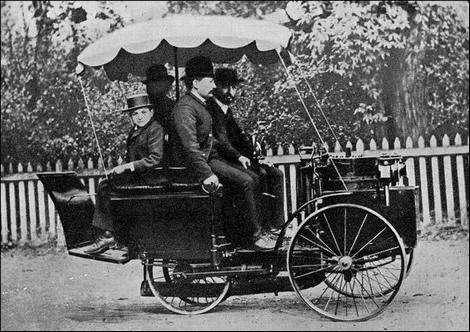
In honor of the mother of Count de Dion, the De Dion steamboat was dubbed “La Marquise.” La Marquise, a nine-foot-long vessel with twin compound steam engines, steering, and seating for four, is also equipped with a steering wheel.
The seats are on top of the steel tank, which can contain 40 gallons of water—enough to travel 20 miles—and steam in 45 minutes thanks to the boiler’s complex fuel system of coal or coke.
The automobile needs 30 to 40 minutes to generate enough steam to start running on coal, wood, and scraps of paper. The maximum speed is 61 km/h (38 mph).
Did You Know?
The first complete automobile race in history took place in 1888, and La Marquise holds the record for being the winner.
2. Grenville Steam Carriage
Year Introduced: 1875
Production: 1875
Manufacturer/Inventor: Robert Neville Grenville
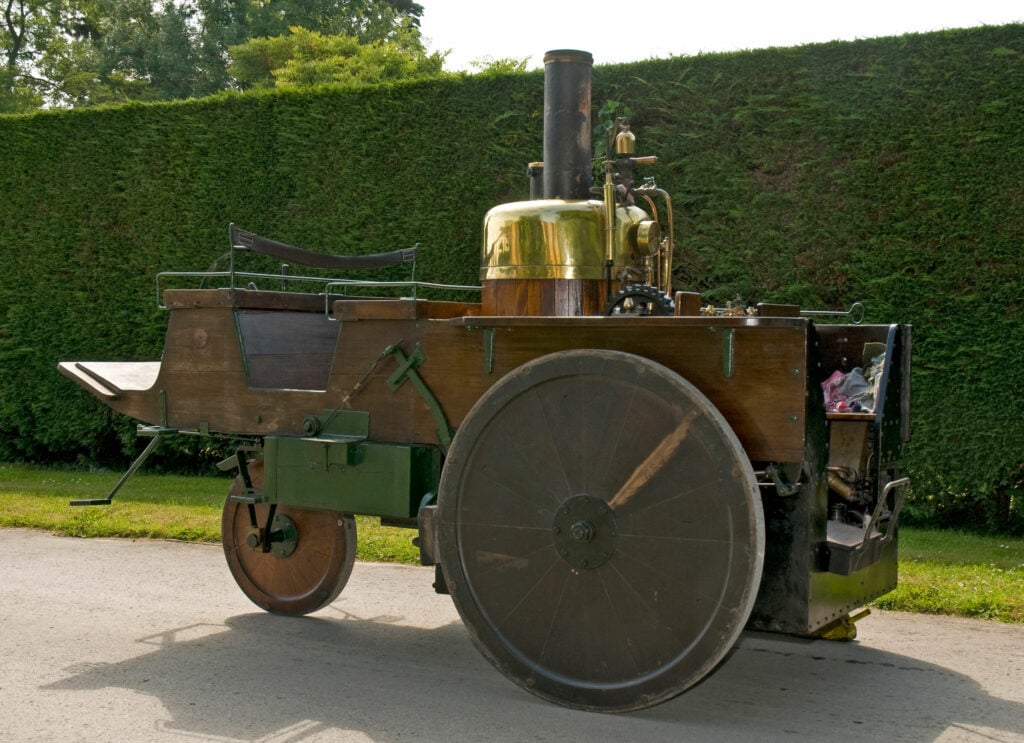
Around 1875, Robert Neville Grenville, a British inventor from Butleigh in Glastonbury, Somerset, began developing his self-propelled road carriage.
At the South Devon Railway workshops in Newton Abbot, he had received his training as an engineer, which meant trains.
George Jackson Churchward, a classmate, and close friend were enlisted by him for this undertaking. The boiler was originally equipped by Grenville and Churchward with a single-cylinder engine; a 236 cu in. twin-cylinder side-valve engine during development.
Did You Know?
The driver, steersman, four passengers, and the fireman—who has the responsibility of fueling and maintaining the boiler—combine to make up the seven people that this carriage is now carrying.
1. Cugnot Steamer
Year Introduced: 1769
Production: 1769
Manufacturer/Inventor: Nicolas Joseph Cugnot
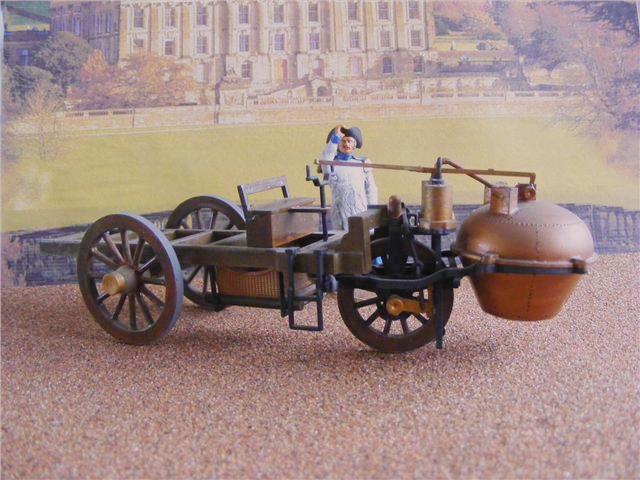
The 1769 Cugnot Steamer, kept in the Musée des Arts et Métiers in Paris, France, is the world’s oldest operating automobile. It was developed by the French inventor Nicolas-Joseph Cugnot in 1765. It is definitely a marvel that the 1769 Cugnot Steamer, the world’s first self-propelled vehicle, still functions.
Around a basic wooden frame, Cugnot and assistant army mechanic Brezin constructed the first automobile in the Paris Arsenal. Their task was to transform a steam engine’s lateral motion into the rotational energy needed for propulsion.
They did this by mounting the engine and boiler above and in front of the front tire.
The automobile only had three substantial wooden wheels, just like the Grenville Steam Carriage, so obviously it required a large number of people to operate. This car’s boiler apparently performed poorly since it required frequent care and upkeep.
Did You Know?
This prehistoric vehicle was built with the goal of serving as a military transport for cannons and extra armament.


